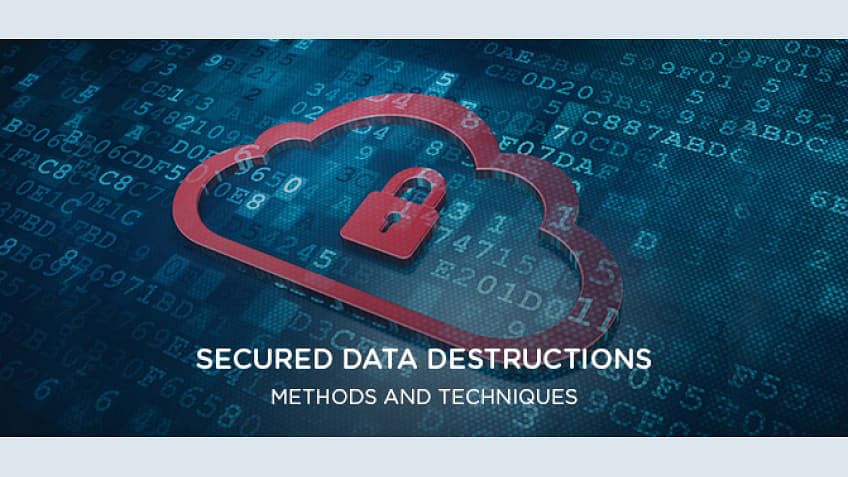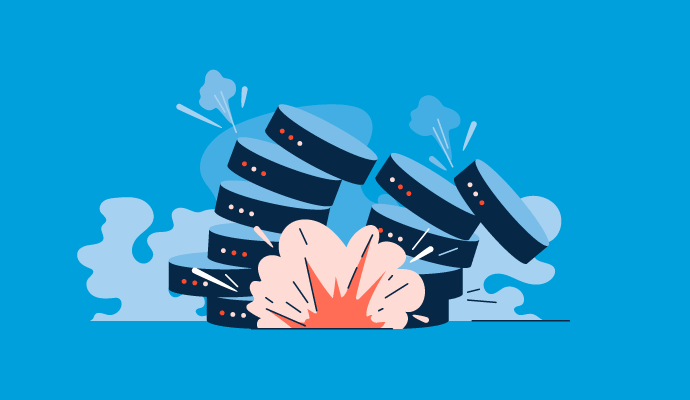Why Data Destruction is a Crucial Part of Comprehensive Cyber Security
Why Data Destruction is a Crucial Part of Comprehensive Cyber Security
Blog Article
The Importance of Effective Data Damage Practices in Safeguarding Sensitive Information and Ensuring Computer System Safety And Security
In a period where information violations are significantly common, the value of efficient data damage techniques can not be overstated. Applying robust information damage techniques not just reduces these dangers but likewise aligns with legal conformity demands, guaranteeing that companies copyright their online reputation and foster client depend on.
Understanding Data Damage
Recognizing information destruction is vital in today's electronic landscape, where delicate info can conveniently be endangered. Effective data destruction involves not merely guaranteeing but erasing files that information is irretrievable with comprehensive techniques. This procedure is vital for companies that take care of confidential customer details, copyright, or inner records, as any kind of breach can bring about severe economic and reputational effects.
Information damage encompasses various techniques, consisting of shredding physical media, degaussing magnetic storage tools, and using software-based options that overwrite data multiple times. Each method offers a certain purpose and must straighten with the level of sensitivity of the information being taken care of. Physical devastation is often liked for hard drives having very confidential information, while software techniques may be adequate for much less sensitive details.
Furthermore, sticking to industry requirements and regulations, such as the General Information Protection Guideline (GDPR) or the Medical Insurance Portability and Responsibility Act (HIPAA), is necessary for compliance and to reduce lawful risks. Organizations should create a durable data damage plan, train workers on ideal practices, and on a regular basis audit their procedures to make sure that all sensitive information is disposed of securely and efficiently.
Dangers of Inadequate Practices
Poor information destruction practices expose organizations to considerable dangers that can have significant repercussions. When delicate details is not effectively dealt with, it remains susceptible to unapproved accessibility, which can bring about information violations and identification burglary. Such occurrences not just endanger the protection of people yet likewise taint the organization's online reputation, causing a loss of consumer trust fund and possible monetary consequences.
Furthermore, regulatory compliance is increasingly stringent in many sectors. Failing to comply with data destruction regulations can lead to substantial penalties and legal activities against companies. These charges can divert and strain financial sources focus from core service operations.
In addition, the abuse of residual information can cause intellectual residential or commercial property burglary or business espionage, endangering competitive benefits (data destruction). The impact of poor data devastation extends past immediate economic losses; it can likewise result in lasting damages to brand honesty and market position

Organizations have to acknowledge that information protection is not entirely concerning protecting against violations; it also includes the responsible monitoring of data throughout its lifecycle. Neglecting efficient information destruction procedures can have tragic ramifications, underscoring the requirement for robust actions to reduce these dangers.
Best Practices for Data Devastation
Implementing efficient information destruction methods is vital for protecting delicate information and maintaining compliance with regulative criteria. Organizations needs to adopt a multi-faceted strategy to guarantee that data is irretrievable, therefore preventing unauthorized access and prospective breaches.
First, information ought to be categorized based on sensitivity, enabling organizations to apply proper destruction approaches tailored to the level of threat. For digital information, using software-based data-wiping tools that adhere to market criteria can effectively overwrite existing data. Physical destruction approaches, such as shredding or degaussing, are essential for gadgets that keep sensitive information, making sure total removal.
Establishing a clear data retention policy is crucial, describing how much time different types of details need to be preserved prior to destruction. Normal audits of information storage systems are additionally necessary to determine outdated or unneeded information requiring removal.
Additionally, training employees my review here on the value of information damage and the details protocols to follow fosters a society of safety within the organization. Maintaining documents of data damage processes provides liability and supports conformity with interior plans and external guidelines. By adhering to these finest practices, organizations can significantly alleviate the threats related to data exposure.
Legal and Conformity Considerations

Failing to comply with these regulations can lead to serious charges, including substantial fines and reputational damage. Organizations should execute a robust data destruction policy that aligns with these legal structures and gives clear standards on the correct techniques of data disposal, whether physical shredding or digital cleaning.
Moreover, preserving documentation of data destruction activities is essential for showing conformity throughout audits or assessments. By prioritizing legal and conformity considerations, organizations can boost their data safety pose and foster trust with stakeholders and clients, ultimately adding to an extra safe and secure information management setting.
Advantages of Effective Data Devastation
Efficient information damage techniques prolong beyond simple compliance; they supply considerable benefits to companies that prioritize them. By guaranteeing that delicate info is irretrievably ruined, organizations minimize the risk of data violations and the prospective financial repercussions connected with them. This proactive strategy not only safeguards against unapproved access but also improves the total credibility of the organization in the eyes of stakeholders and clients.
Applying robust information destruction techniques, such as physical devastation of storage gadgets or innovative data cleaning techniques, adds to the strengthening of an organization's cybersecurity pose. data destruction. It reduces the probability of intellectual property theft and secures proprietary details, thereby preserving an one-upmanship on the market

Verdict
In final thought, reliable data damage practices are crucial for safeguarding sensitive info and improving total computer system safety. By applying extensive techniques such as degaussing, shredding, and software program overwriting, visite site companies can minimize the threats related to unapproved access and data breaches. Adherence to regulative requirements, consisting of GDPR and HIPAA, more enhances conformity and shields versus lawful repercussions. Eventually, a dedication to durable information damage methods cultivates a society of obligation, consequently enhancing a company's cybersecurity pose and maintaining client count on.

Report this page